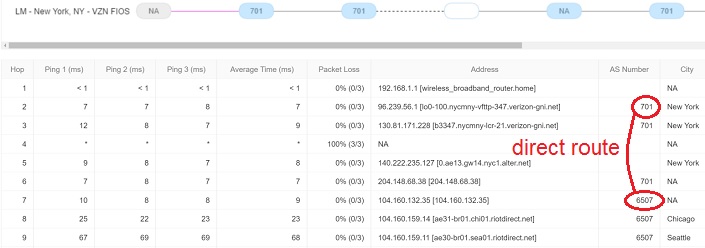Riot Games Direct Connections from Users to its Servers
Riot Games aimed to serve their users a faster, better user experience by providing direct connections to their servers, bypassing the need for third parties.
Every day more than 27 million people depend on Riot Games’ League of Legends to deliver an incredibly fast user experience. My fellow Catchpointer Greg Rubin and I are two of them. Like just about everyone else who plays, we can tell when our connection to the server is faster or slower, even by a handful of milliseconds. A faster connection means better input times, and the ability to react faster to game situations. We noticed recently that we were doing better than usual, and saw that our ping times were improving.
Since we’re in the industry we follow Riot’s [technical blog](https://support.riotgames.com/hc/en-us/articles/204246204-NA-Server-Roadmap = Plan), which claimed that the company was frustrated with its lack of control over third-party routing and had been actively working to provide direct routes between players and their servers. Naturally we wanted to verify this. Here’s what we saw:
First we set up traceroute tests on Catchpoint last-mile nodes, from Verizon (which I use), and Time Warner (which Greg uses). You can see in the chart below that Verizon (ASN 701) connects directly to Riot Games (ASN 6507) – just as they said.

In this next chart you can see that connecting through Time Warner (ASN12271) also connects directly to Riot Games (ASN 6507). Although Greg’s experience is still a hair slower than mine, which is awesome.

Next we set up traceroute tests from the same nodes to another gaming server, from Blizzard – Heroes of the Storm, which is similar to League of Legends. As you can see in the next chart, Greg’s route to the server (hosted on AT&T’s network) was more complicated, adding an additional provider, XO Communications. Mine went direct to AT&T and, again, connected faster than Greg’s.

The bottom line is that Riot Games’ claim is true. They found a way to shave milliseconds off response times by working around internet service providers and negotiating their own peering on a network-by-network basis. This is a great example of a company understanding that its online experience is critical and taking matters into their own hands to deliver an amazing user experience. And believe me, users can tell the difference.
By: Mitchell Zelmanovich and Greg Rubin


